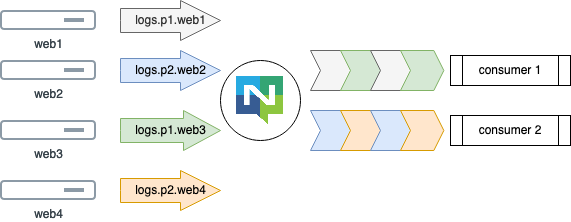Yesterday we did a quick intro to JetStream, before we jump in and write some code we have to talk a bit about how to configure it via its API and how it relates to core NATS.
NATS Streaming Server, while built using the NATS broker for communication, is, in fact, a different protocol altogether. It’s relation to NATS is more like that of HTTP to TCP. It uses NATS transport, but its protocol is entirely custom and uses Protobuf messages. This design presented several challenges to users - authentication and authorization specifically were quite challenging to integrate with NATS.
NATS 2.0 brought a significant rework of the Authentication and Authorization in NATS and integrating the new world with NATS Streaming Server would have been too disruptive. Further NATS 2.0 is Multi-Tenant which NATS Streaming Server couldn’t be without a massive rework.
So JetStream was started to be a much more natural fit in the NATS ecosystem, indeed, as you saw Yesterday the log shipper Producer did not need a single line of code change to gain persistence via JetStream. Additionally, it is a comfortable fit in the Multi-tenant land of NATS 2.0. All the communication uses plain NATS protocol, and some JSON payloads in its management API.
[Read More]
